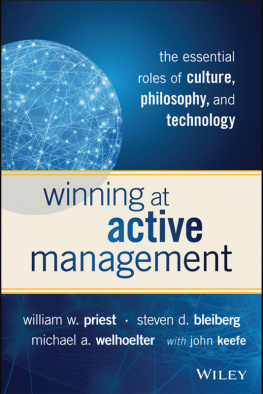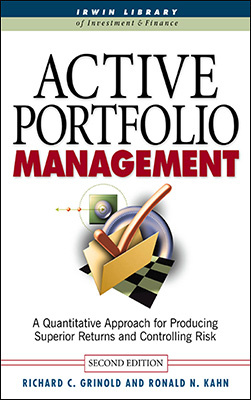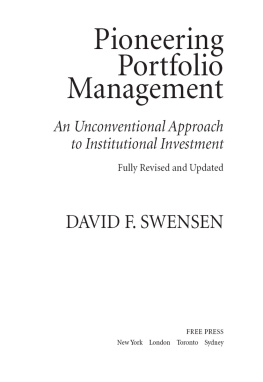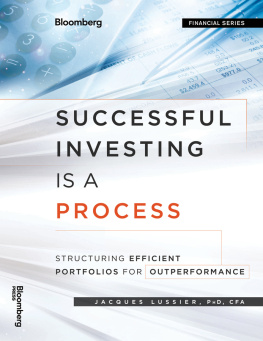Richard Grinold - Active Portfolio Management: A Quantitative Approach for Producing Superior Returns and Controlling Risk
Here you can read online Richard Grinold - Active Portfolio Management: A Quantitative Approach for Producing Superior Returns and Controlling Risk full text of the book (entire story) in english for free. Download pdf and epub, get meaning, cover and reviews about this ebook. year: 1999, publisher: McGraw-Hill, genre: Business. Description of the work, (preface) as well as reviews are available. Best literature library LitArk.com created for fans of good reading and offers a wide selection of genres:
Romance novel
Science fiction
Adventure
Detective
Science
History
Home and family
Prose
Art
Politics
Computer
Non-fiction
Religion
Business
Children
Humor
Choose a favorite category and find really read worthwhile books. Enjoy immersion in the world of imagination, feel the emotions of the characters or learn something new for yourself, make an fascinating discovery.

- Book:Active Portfolio Management: A Quantitative Approach for Producing Superior Returns and Controlling Risk
- Author:
- Publisher:McGraw-Hill
- Genre:
- Year:1999
- Rating:3 / 5
- Favourites:Add to favourites
- Your mark:
Active Portfolio Management: A Quantitative Approach for Producing Superior Returns and Controlling Risk: summary, description and annotation
We offer to read an annotation, description, summary or preface (depends on what the author of the book "Active Portfolio Management: A Quantitative Approach for Producing Superior Returns and Controlling Risk" wrote himself). If you haven't found the necessary information about the book — write in the comments, we will try to find it.
This new edition of Active Portfolio Management continues the standard of excellence established in the first edition, with new and clear insights to help investment professionals.
-William E. Jacques, Partner and Chief Investment Officer, Martingale Asset Management.
Active Portfolio Management offers investors an opportunity to better understand the balance between manager skill and portfolio risk. Both fundamental and quantitative investment managers will benefit from studying this updated edition by Grinold and Kahn.
-Scott Stewart, Portfolio Manager, Fidelity Select Equity Discipline
Co-Manager, Fidelity Freedom Funds.
This Second edition will not remain on the shelf, but will be continually referenced by both novice and expert. There is a substantial expansion in both depth and breadth on the original. It clearly and concisely explains all aspects of the foundations and the latest thinking in active portfolio management.
-Eric N. Remole, Managing Director, Head of Global Structured Equity, Credit Suisse Asset Management.
Mathematically rigorous and meticulously organized, Active Portfolio Management broke new ground when it first became available to investment managers in 1994. By outlining an innovative process to uncover raw signals of asset returns, develop them into refined forecasts, then use those forecasts to construct portfolios of exceptional return and minimal risk, i.e., portfolios that consistently beat the market, this hallmark book helped thousands of investment managers. Active Portfolio Management, Second Edition, now sets the bar even higher. Like its predecessor, this volume details how to apply economics, econometrics, and operations research to solving practical investment problems, and uncovering superior profit opportunities. It outlines an active management framework that begins with a benchmark portfolio, then defines exceptional returns as they relate to that benchmark. Beyond the comprehensive treatment of the active management process covered previously, this new edition expands to cover asset allocation, long/short investing, information horizons, and other topics relevant today. It revisits a number of discussions from the first edition, shedding new light on some of todays most pressing issues, including risk, dispersion, market impact, and performance analysis, while providing empirical evidence where appropriate. The result is an updated, comprehensive set of strategic concepts and rules of thumb for guiding the process of-and increasing the profits from-active investment management.
Richard Grinold: author's other books
Who wrote Active Portfolio Management: A Quantitative Approach for Producing Superior Returns and Controlling Risk? Find out the surname, the name of the author of the book and a list of all author's works by series.









